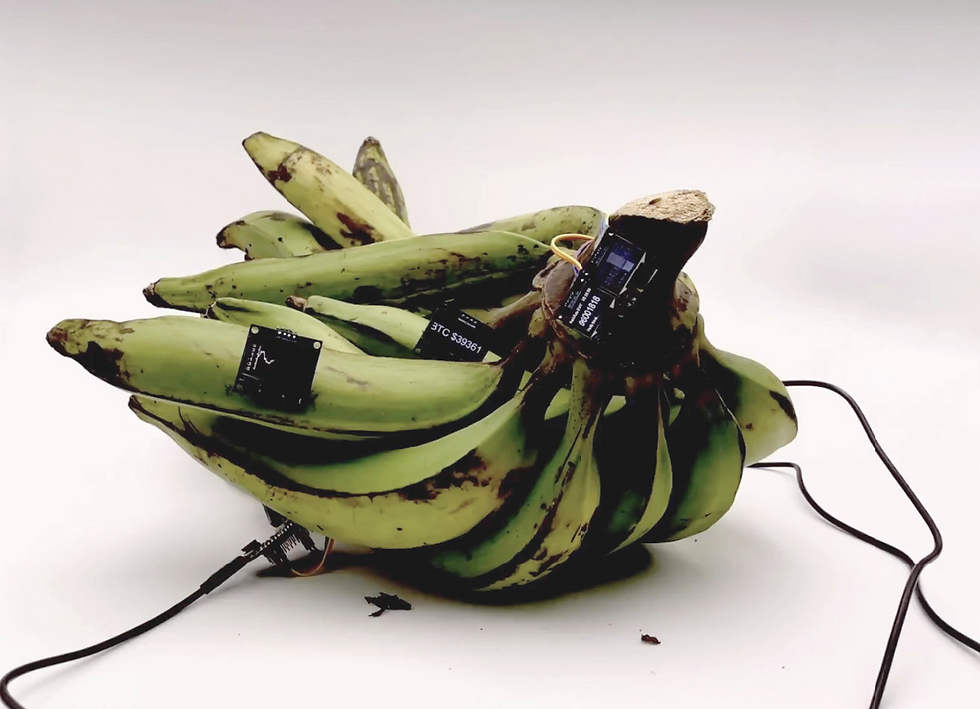Latin American Artists Seen At Liste Art Fair Basel 2022
- Jenny Munoz

- Jun 22, 2022
- 4 min read
Updated: Nov 3, 2024

Courtesy of Liste Art Fair Basel
Art Basel in Basel wrapped up its latest edition on Sunday, returning to its usual June dates for the first time since 2019, and it welcomed over 70,000 guests and made millions on art sales. One of the most buzzworthy sales was driven by Hauser & Wirth, which sold Louise Bourgeois’s Spider (1996) for $40 million, a figure that tops the artist’s auction record, set at Christie’s in 2019, by nearly $8 million. If this is not a clear indication that the ultra-rich are hedging their money against the rising inflation with art, I don’t know what is! With the influx of jet-setters looking to spend their money, other art fairs tend to happen at the same time, but of course, showcasing younger artists at different price points. Liste Art Fair Basel is one of the exciting satellite fairs that occur at the same time as Art Basel. This year, Liste Art Fair Basel selected 82 galleries from 37 countries. With this many participants, I filtered the list of artists to bring you some of the most exciting emerging artists from Latin America whose work was exhibited at Basel this year.
Continue reading to find out who the five artists I've selected are.
1.) Andres Matias Pinilla
(b. 1988, Colombia)
Courtesy of Andres Matias Pinilla and FORO.SPACE gallery.
In his work, Andres Matias Pinilla proposes a holistic vision of human knowledge in recognition of the ethnic, sexual, racial, religious, and philosophical plurality of our species. His work insists on the imminent decolonization of language and territory as the main path toward a genuinely global, plural, and united world. Matias Pinilla's exhibition projects combine different media and invite the active participation of those who come to experience them. He finds in the poetic language possibilities to experiment, fable utopias, and tentacular with other artists subversive ways of hacking the hegemonic systems of circulation of contemporary art. He lives and works in Buenos Aires, Argentina.
Courtesy of Andres Matias Pinilla and FORO.SPACE gallery.
2.) Raul Silva
(b. 1991, Peru)
Courtesy of Raul Silva and Crisis gallery.
Raul Silva is an artist whose methodological approach involves academic research, curatorship, and art as a technical medium to build a series of projects based on the reproduction of visual historical archives, texts, and artworks. In the last years, he has focused on working from historic memory, approaching the relations between the colonial religious imagery, the ideal of modernity, the paradigm of progress, and the aftermath of the internal armed conflict in Perú. Recently he is focused on science fiction narratives and design. Silva lives and works between Amsterdam, Netherlands and Pamplona, Spain.
Courtesy of Raul Silva and Crisis gallery
3.) Orestes Hernandez Palacios
(b1981, Cuba)
Courtesy of Orestes Hernandez Palacios and El Apartamento gallery.
There is a constant propensity to short circuit and break in the work of Orestes Hernández. His objects and installations dismantle the artistic reality in the search for new ways to face creation. In the case of painting, and production that connects with his work in video, Orestes shows the aesthetics of "cut and paste" and contemporary visual saturation. More than an artist, Orestes is a cultural chronicler of his time. He lives and works in Havana, Cuba.
Courtesy of Orestes Hernandez Palacios and El Apartamento gallery.
4.) Gabriela Torres Ferrer
(b. 1987, Puerto Rico)
Courtesy of Gabriella Torres-Ferrer and Embajada gallery.
Gabriella Torres-Ferrer’s work considers the implications of existence within networked globalized life. They’re interested in the societal transformations of modern cybernetics; our digital reality and how this is redefining nature, vis a vis; understanding how old power structures are sustained, and acquire new forms. Their trans-media practice seeks to challenge hegemonic narratives, interfaces, modes of viewership, and materialities, often pondering the potential for transformation. Connecting internet culture, post-colonial psycho-social landscapes, ecologies, and globalization. Torres-Ferrer’s work questions structures of power and means of production and exchange; what it means to be a body in this datafied world. Their transmediale practice integrates new media, installation, video, and web-based interventions, among other experimentations.
Gabriella Torres-Ferrer and Embajada gallery.
5.) Tomás Díaz Cedeño
(b. 1983, Mexico)
Courtesy of Tomás Díaz Cedeño and Peana gallery.
Tomás Díaz Cedeño is a Mexico City-based artist whose practice focuses on questions relating to the body, how the body is or how it can be represented. His works questions the need to control and the hierarchy as a cultural mechanism to understand the world. His work created narratives through objects or sculptures included in installations. It is sometimes referencing systems activated through subtle gestures such as body movement through space or fountain-like water flowing. The idea that sculptures are understood as autonomous entities are recurrent in his works. It seems as if the objects he creates do not correspond to a specific historical time, being related to the past and future. That fictional characteristic is intentional and reinforced through an illusory use of different materials and techniques.













